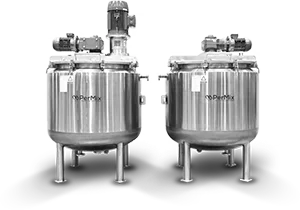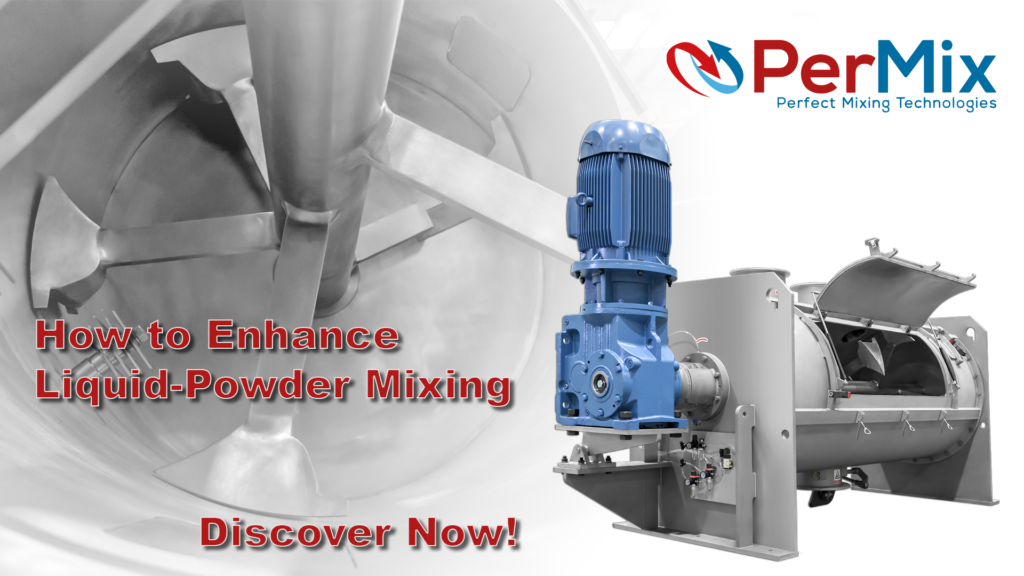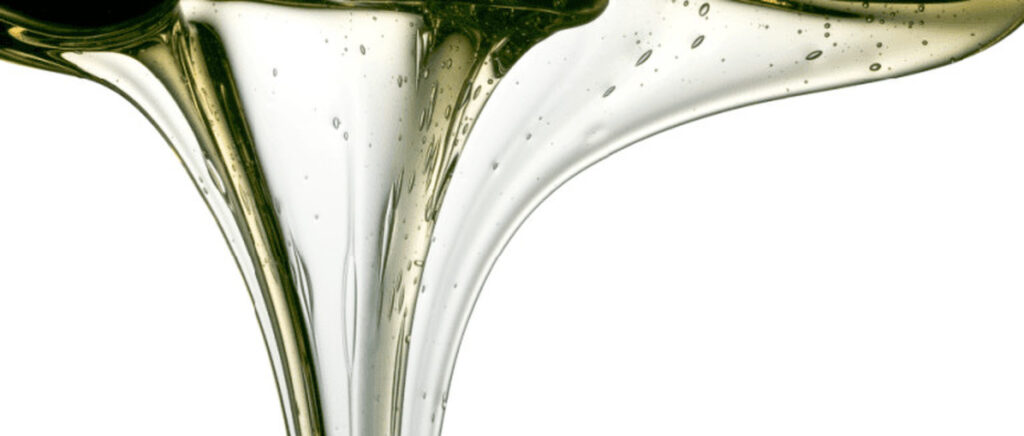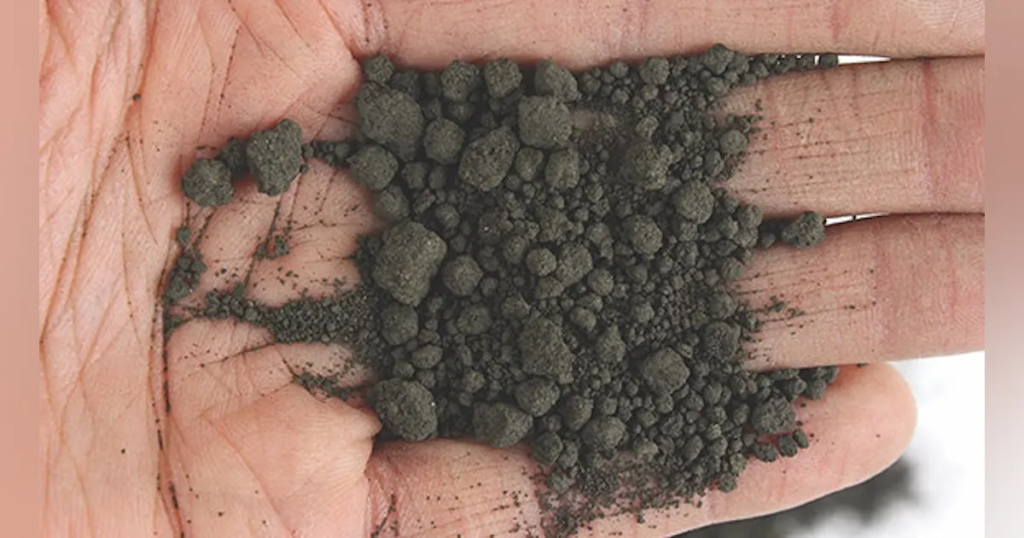Industrial Mixers
PerMix News & Updates



This article delves into adding liquids to powder blends, focusing on key points like particle coating, particle size’s impact on surface area, handling viscous liquids, high-speed chopper blades, agglomerate formation, and their advantages. It also covers factors such as batch size, dust reduction, and blender selection for liquid-powder mixing. Written by Peter R. Holman, it emphasizes the importance of testing and modification considerations.
There are many reasons to add a liquid to a powder: For example, your formulation may require it, or you may need to granulate or dedust the powder.
In each case, the key is to coat the particles. The finer the particles, the more surface area there is to coat or absorb the liquid. For example, a 1-pound batch of 10-micron spherical particles has about 100 times the surface area of a 1-pound batch of 100-micron spherical particles. So, you can add more liquid to the 10-micron batch and still get a freeflowing powder.
In this month’s column, I’ll respond to some of the questions I’ve been asked about adding liquids to powders. The liquid I’m adding to my powder

When adding liquids to a powder blend, fluidize the powder or make sure it’s flowing. The movement keeps each particle’s surface constantly exposed so that the liquid can coat it. If you’re adding a high-viscosity liquid, you can try one of these techniques:
High-speed chopper blades help in many ways. They:
Sometimes adding liquids to a powder blend forms agglomerates. This can be beneficial, especially when you have fines and large particles that otherwise tend to segregate. If you can coat the particles, the liquid can make the fines stick to the large particles.
About 90 percent of the time, each agglomerate will be about 40 mesh and freeflowing. If your downstream or next process step can handle this particle size, then there is no problem.
A lot of times you’ll wonder, “How come I’m getting this?” But sometimes it just happens that way. Experience helps you figure out how to control it to get the result you want. For example, you can turn the chopper blades on or off or adjust the liquid addition speed. You can also change the liquids you’re adding because some are more conducive to making agglomerates than others.

The liquid is acting like a binder. Often, a manufacturer will send the agglomerate to a dryer to be dried, but drying can also happen naturally in a blender because you’re adding heat. The dried agglomerates then become granules when they’re dried pretty well and have become porous.
Granules can be beneficial — for example, if you’re producing a dry material that will be expected to dissolve when added to a liquid. A fine particle must be thoroughly wetted before it’ll drop below the liquid surface and dissolve. However, a granule generally won’t float on the surface; it’ll drop directly into the liquid and dissolve. This can decrease the cost and difficulty of the next process step or benefit your customer.
Think about chocolate milk, for example: When you add chocolate powder to milk to make chocolate milk, the powder must be stirred vigorously to go into solution rather tan just float on the surface. However, a granular chocolate product like Ovaltine doesn’t float on the surface. It sinks into the milk and is dissolved with modest stirring. Granules can have the same effect in your process.
A batch that’s too small can cause the powder to coat the blender’s walls or blades. What you want is adequate volume to allow the powder to fluidize. In fact, both too-small and too-large batches can cause problems. A too-large batch won’t allow adequate fluidization. You need some air space. It’s like when you get a bottle of salad dressing, and the label says, “Shake well before using.” The first time you use it you can’t really shake it because there’s no void space for the dressing to toss around in. A lot of people fill their blender to the very top and, especially if they’re adding liquids, it just doesn’t work.
You can add a liquid that will cause the fines to stick to the larger particles. This liquid must be inert to your product — that is, it shouldn’t adversely affect the next process step. Caution: If you must change the powder blend like this, be sure to communicate with the next department that will use the blend or with your customer so they’re aware of what you’re adding and how it will affect the blend.
Most blenders can be used as is or can be modified to accept liquids. For example, you can use a ribbon or plow blender, bowl mixer, rotating V-blender or double-cone blender, a fluidized- bed blender with a spray nozzle, or a conical screw mixer. I’ve mixed liquids with powders in blenders that weren’t designed for it and still gotten good results. But some types may work better for your application than others. You can improve the results by using a high-speed chopper blade.

If you blend only one powder compound in a blender, you can have the blender set up or designed specifically for that application. But since you rarely blend only one powder compound in a blender, you rarely have the ideal setup. Nevertheless, you can take steps to make it as close to ideal as possible. For example, consider your method of adding the liquid:
Depending on the method you use, you can vary the agglomerate’s size by controlling the liquid addition rate, the dispersion bar rotational speed, and the spray nozzle droplet size.
Yes, but you need a fluidized area for the spray or a sheet-type material Flow (such as that in a ribbon blender) where the powder surface is constantly renewing.
There are many things to keep in mind when you add liquids to powders, and the questions above cover only some of them. To ensure that modifications won’t adversely affect your compounds, be sure to test your blender if you modify it.
Peter R. Holman, PE, is a consulting engineer specializing in engineering and designing mixing systems. He has more than 25 years’ experience developing mixing systems for the chemical, pharmaceutical, cosmetics, biotech, and food industries. Peter leads mixing seminars at the College of Engineering, Professional Development, University of Wisconsin -Madison, and is the author of a book on mixing. He holds a BS in chemical engineering from the University of Wisconsin-Madison.
Source: Powder and Bulk Engineering